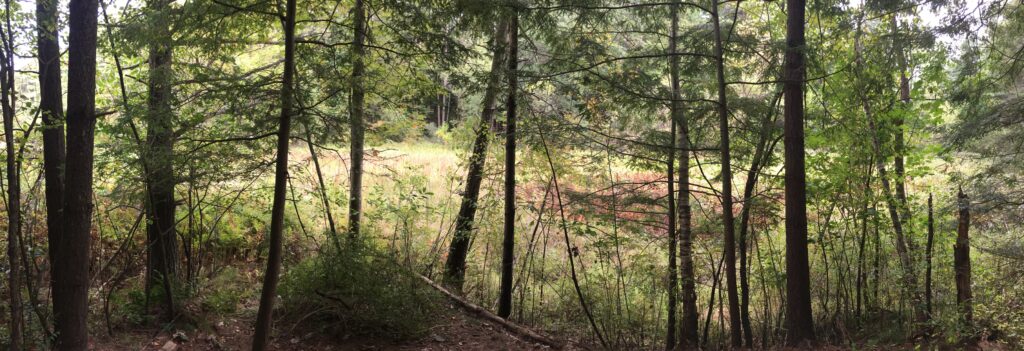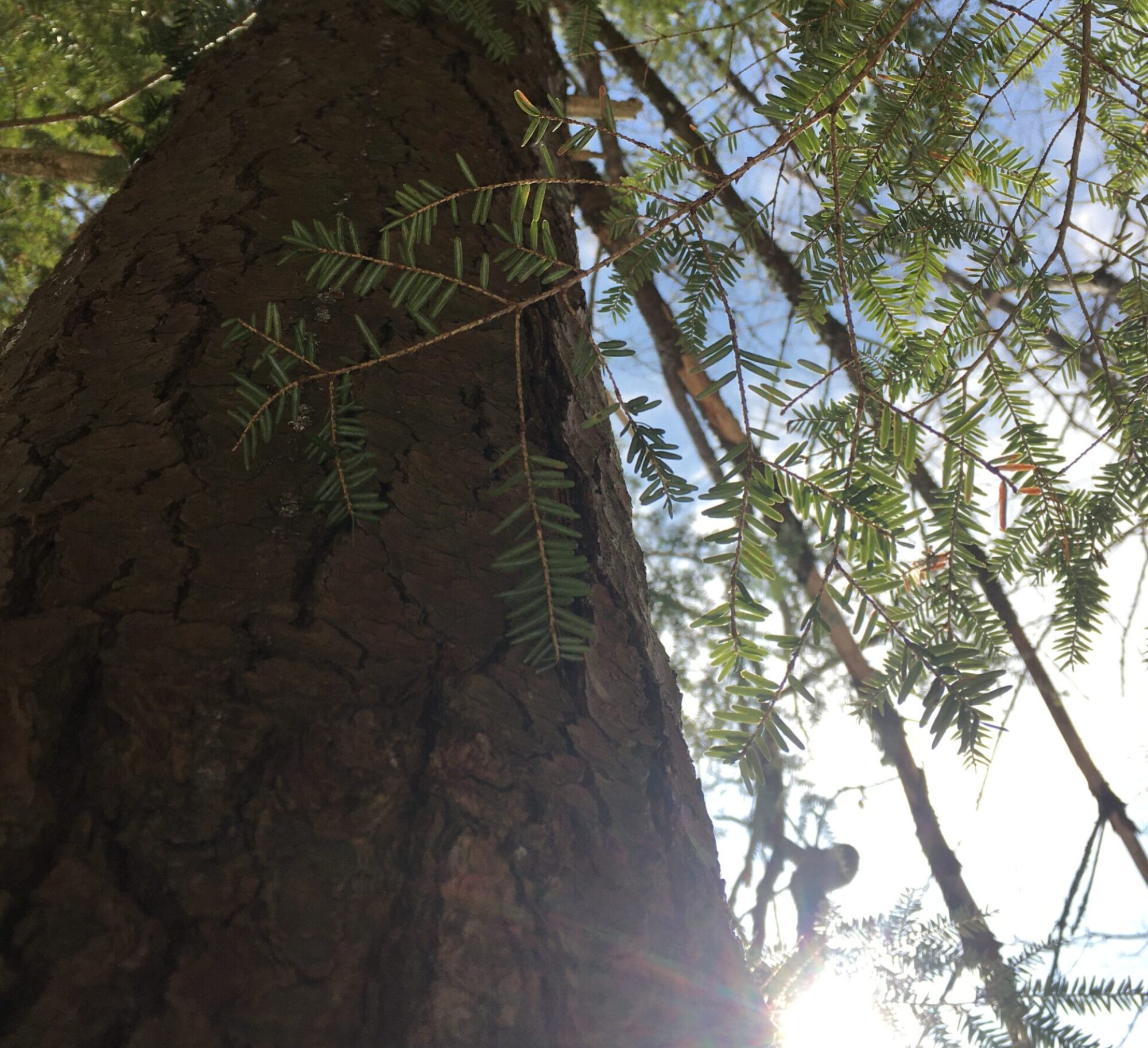
About 0.29 miles along the trail head of the path through Centennial Woods off of Catamount Drive, there lies a projection of elevated land (a peninsula or plateau if you will) extending into a field in the middle of the woods. In journeying to this spot, one may cross Centennial Brook, but that depends on the path one chooses. There is a comfort in knowing that many paths can ultimately lead to the same place. This projection is forested, but just beyond the extent of the woods one finds themselves in a dry field full of grasses and cattails. However, from the peninsula one may feel sheltered by the surrounding forest despite the proximity of the expansive field and the walking trail (which lies directly behind a visitor if they face the field). The end of the projection is bulb-like, providing a circular platform upon which one may sit upon damp earth, observe, listen, and think. The plateau is essentially bare of trees and vegetation and is covered in pine needles; it is obvious where past observers have tread to reach this location. Whether the plateau was cleared on purpose or naturally is unknown, but the location feels central, as if it were made for an interaction between humans and nature. After a long enough period of time, movement occurs about the static observer accompanied by the chirps and cries from the abundance of birds in the area. On an overcast and windy day, such as it was on Sunday, October 6th, 2019, towering trees protected the organisms and the accompanying observer from the winds, which could be heard whooshing above; even in the field, the winds were assuaged by the trees which encircled it. Whether these noises were carried by wind or were simply nearby, one could also hear the cars presumably traveling along Interstate 89. In this location, halfway between the main trail and seldom-trotted ground, the songs of birds stood out against the acoustic retorts of mechanization and civilization. This pulled the observer between two worlds, or perhaps serves as a demonstration of the inseparability of humans from nature, and vice versa. Below is the field journal from this visit along with images of the field notes and the location itself.
6 October 2019 1327-1405
Centennial Woods, Burlington, Chittenden Co., Vermont
From the trail head of Centennial Woods, I walked 0.29 miles along the trail bearing left at every intersection until I reached a forested projection into a field on my right. This is where I made my observations at 272 ft in elevation.
Weather: Overcast, windy, 54°F
Habitats: A downward sloping, forested hill eventually giving way to a field then turning back into forest and sloping upward.
Vegetation: In the forest, wood ferns and grass were dominant along the needle-covered floor which bore few leaves. The canopy primarily consisted of coniferous trees with some deciduous trees such as Norway Maples and Paper Birches; these deciduous trees still bear green leaves although some of the maple leaves are beginning to turn orange. Barberry and other smaller shrubs persisted in this area too. The field was mostly grass, with Cattails and Joe-Pye Weeds dominant among the taller vegetation. Some of the older Cattails were brown-leaved and lacked their brown furry structure.
General Commentary: Insect activity was nominal or unobserved. Mammal activity was nominal or unobserved. Avian activity was plentiful, though mostly went unobserved. During the observational period, a presumably large bird gave long, sharp, high cries across the field (outside the range of visual observation). I observed at least three birds with black heads and throats, white necks, and grey bodies – these were identified as Black-capped Chickadees; their throaty “dee” call and sharp tweets could be heard. I also observed a woodpecker of the genus Dryobates pecking on primarily coniferous tree branches it seemed. The bird had a black head, white underbelly/body, and a patchwork of grey, black, brown, and white on its back. This bird gave short, clear tweets.
Species List:
Plants:
Eutrochium
Typha
Dryopteris
Birds:
Poecile atricapillus
Dryobates
Mammals: None observed
Insects: None observed
